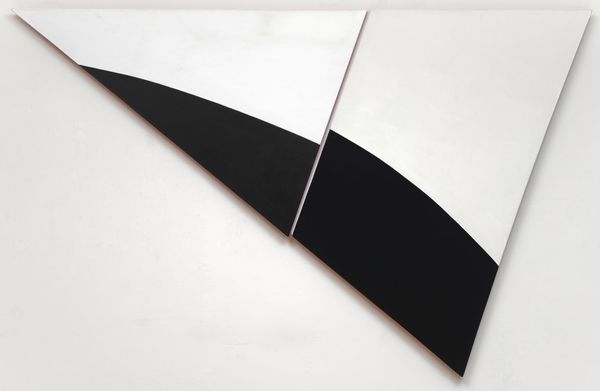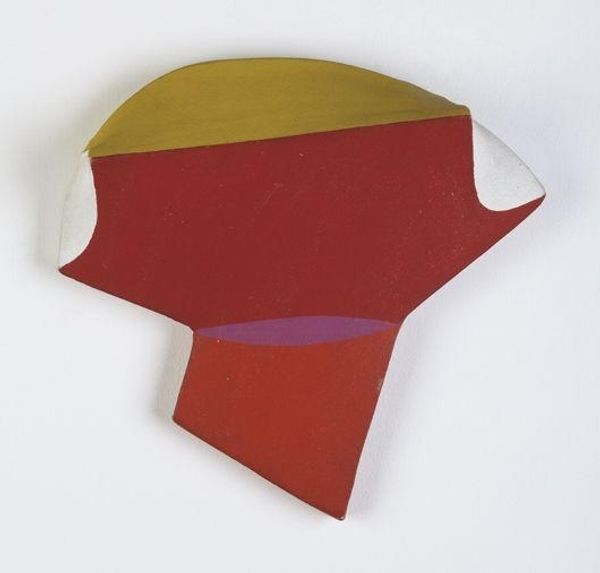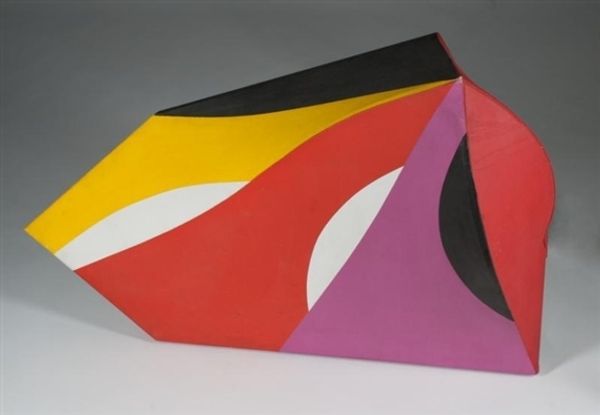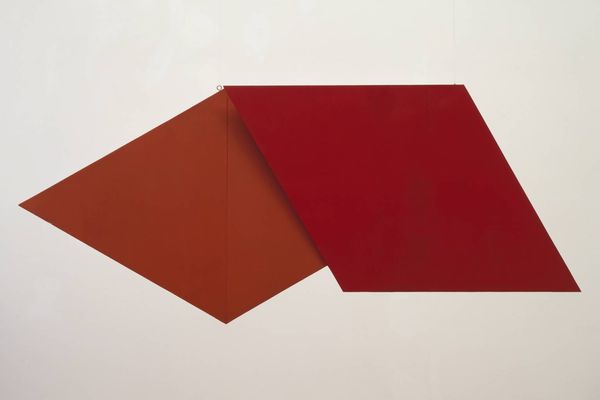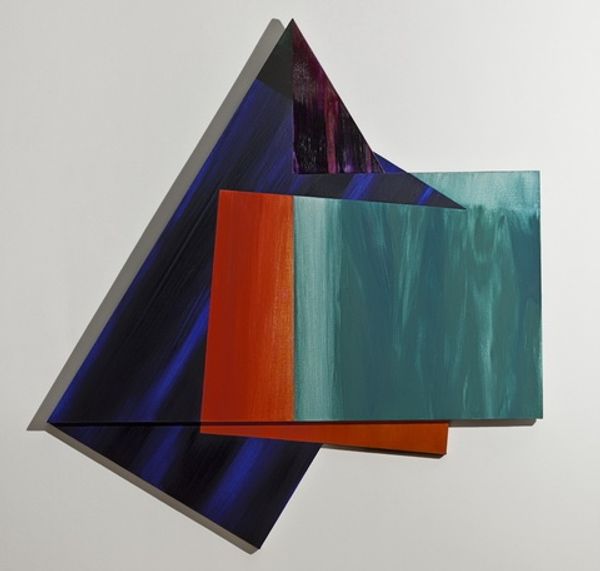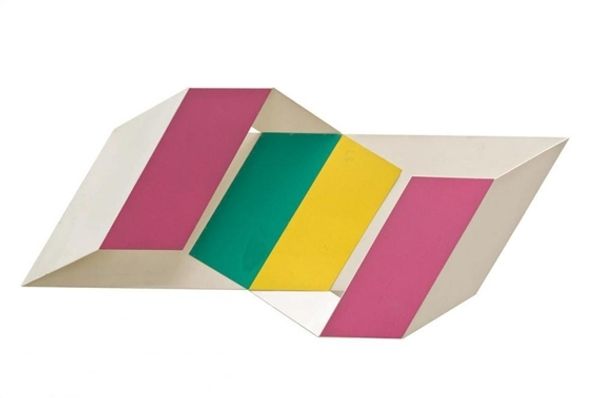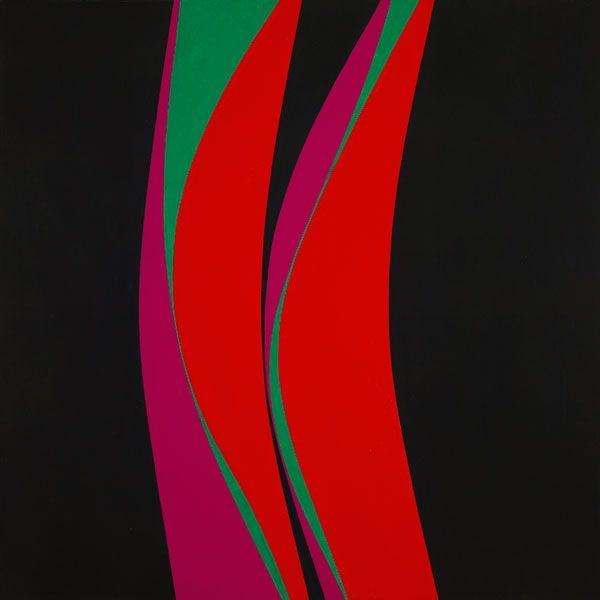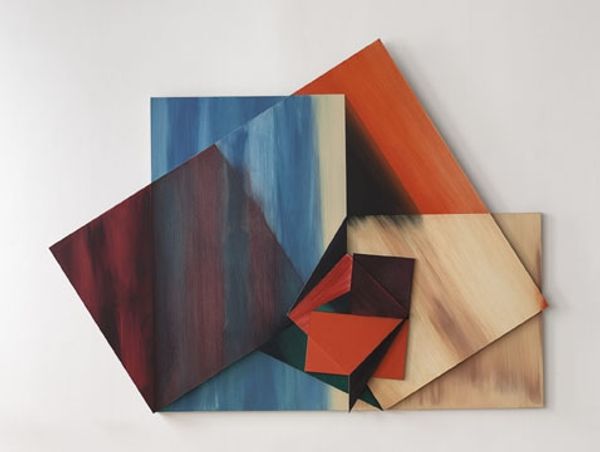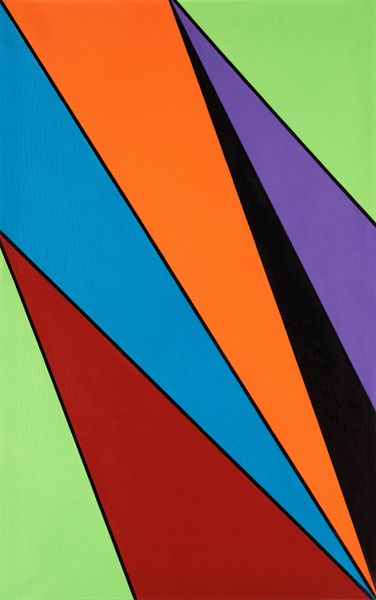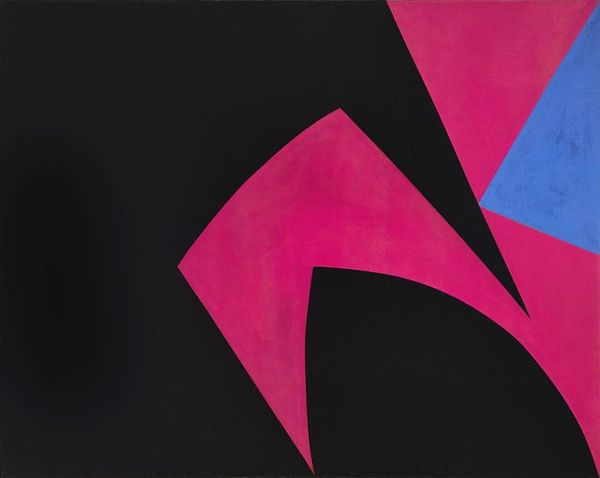
mixed-media, sculpture
#
mixed-media
#
minimalism
#
colour-field-painting
#
geometric
#
sculpture
#
abstraction
#
pop-art
#
line
#
hard-edge-painting
Copyright: Charles Hinman,Fair Use
Editor: Charles Hinman's *Poltergeist*, created in 1964, is quite striking. The mixed media sculpture… it almost looks like a distorted teardrop, with vibrant colours sliced across its surface. I’m initially drawn to its boldness, and how it seems to defy the traditional rectangular canvas. How do you interpret this work? Curator: Oh, isn't it a cheeky thing? The very title suggests a playful disruption. The artwork shrugs off convention. Imagine Hinman in his studio, not content with a flat plane! He’s building outward, playing with dimensionality. Look at how the colours aren't contained – they actively define the form. Are we looking at painting becoming sculpture, or sculpture masquerading as painting? He messes with your perception! Editor: It does feel a little bit mischievous, this bending of genres. Was Hinman part of a particular movement, and why *Poltergeist*? Curator: Absolutely. He's playing within the sandbox of the time – the Pop Art explosion! And Minimalism’s cool restraint. These were times when artists were daring each other, "how far *can* we push it?". As for the name, perhaps it's the sensation that something unseen is moving the forms and colours? It’s spectral. Editor: I see what you mean. It's less about *what* is represented and more about the experience of colour and shape in space. A spectre disrupting artistic boundaries. Curator: Exactly! You know, now I’m wondering... did Hinman ever try levitation in his studio? Perhaps we should consult a medium. Editor: Ha! Now, there’s a research proposal. I never thought about colour and shape being that playfully "disruptive."
Comments
No comments
Be the first to comment and join the conversation on the ultimate creative platform.
